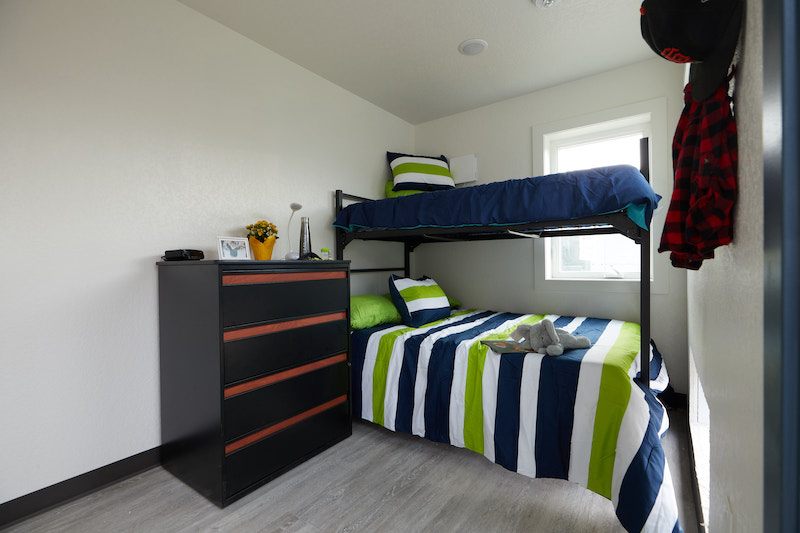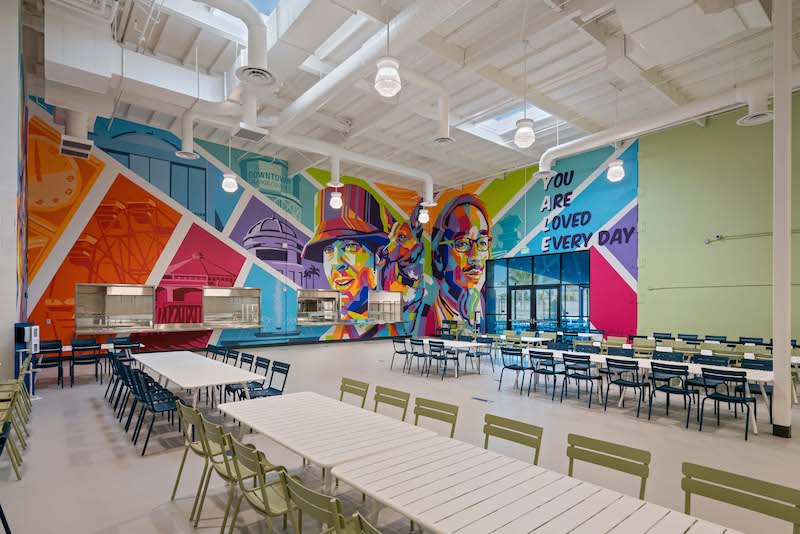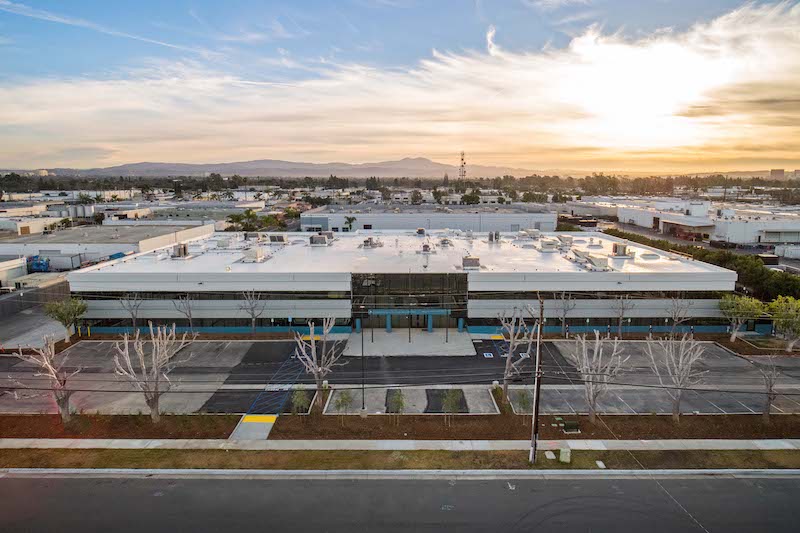On any given day, there are close to 600,000 people who are homeless in the United States, according to estimates by the Department of Housing and Urban Development. The number among those homeless that is unsheltered has been rising since 2016, and now exceeds 226,000.
Sheltering the homeless has always been a NIMBY and political hot potato; witness the brouhaha created when New York City started relocating 8,500 homeless people from many of the 60 vacant hotels they had been moved into temporarily last year because of the coronavirus pandemic. And Boise, Idaho’s Mayor Lauren McLean has named 19 citizens to a taskforce she created in response to what’s been reported as fierce neighborhood opposition to Interfaith Sanctuary’s plan to build a homeless shelter on that city’s State Street.
But the need for more homeless shelters is undoubtedly evident, growing, and national, impacting metros large and small.
A hotel previously used by the City of Austin, Texas, as a COVID-19 isolation center is set to open in August as the second bridge shelter for people experiencing homelessness in the state’s capital, where there’s been a noticeable increase in people living in outdoor tents.
In Anchorage, Ala., there’s been pressure to decommission a mass shelter by this fall, with Mayor Dave Bronson proposing a large new facility, costing $15 million, that would accommodate up to 450 people, and whose development would be informed by what’s worked (and what hasn’t) in markets like Reno, Nev., and San Francisco. And the City Council in Phoenix has just awarded two local organizations—Central Arizona Shelter Services (CASS) and Community Bridges—$8 million to open homeless shelters in west and northwest Phoenix. CASS would use its portion of that grant to buy and adapt an existing hotel.
AEC FIRMS GET INVOLVED IN SHELTER PROJECTS
This crisis would seem to be an opportunity for the AEC industry, just as the COVID-19 outbreak stimulated any number of new ideas for creating safe, emergency healthcare, education, and living spaces. One of AIA’s Small Project awards this year was The Community First! Village Micro House, designed by McKinney York Architects as a non-towable tiny house for a homeless person. It was built in Austin as part of a community of tiny houses that provides shelter to the homeless.
Earlier this week, California Gov. Gavin Newsom visited LifeMoves Mountain View, a modular housing community that opened on May 27 in Mountain View, Calif., and, as part of California’s HomeKey program, provides temporary housing and resources for up to 124 homeless people.
LifeMoves Mountain View, a transitional homeless shelter in northern California built by XL Construction, used 48 shipping containers for 100 living units. Images: Courtesy of XL Construction

The 100-unit facility was designed by Charles Bloszies, FAIA, a San Francisco-based architect. Sares Regis Group Northern California was the Project Manager. XL Construction was the GC. Other building team members were BKF Engineers (CE), ARUP (MEPF), and WEST Environmental (environmental engineer). Connect Homes (individual units), Urban Bloc (dining, bathrooms, laundry), Falcon Structures (case management and support service rooms), and Indie Dwell (family units) provided 48 shipping containers with 100 doors that created the living spaces within this 43,560-sf facility on one acre, 30% of which is dedicated to support services delivery.
“This project strikes at the core of our mission to ‘build to improve lives,’ ” says XL’s vice president Craig Ellis.
According to XL Construction, the modular structures were ready for habitation in less than 180 days from when construction commenced last December. The facility’s amenities include private locking units for each household, meeting and case management rooms, green spaces and gardens, laundry facilities, food prep and services, 19 onsite and 30 offsite parking spaces, playground, dog kennels, a children’s education center, and family services support buildings.
LifeMoves, the largest provider of interim housing and services for homelessness in Silicon Valley, expects to serve about 350 people in its new facility’s first year, more than half of Mountain View’s current homeless population.
NEW FACILITY IS A STEP TOWARD PERMANENT HOUSING

The dining hall at Yale Navigation Center in Santa Ana, Calif., one of that facility's many services. Image: JunTang Photography.com
In Santa Ana, Calif., the general contractor C.W. Driver Companies just completed the 64,000-sf Yale Navigation Center, a two-story emergency homeless shelter that will provide refuge for 275 single men, 100 single women, and 25 couples. The navigation center is set up to help homeless people transition into permanent housing and self-sufficiency.
The facility, which is an adaptive reuse of an existing warehouse-manufacturing building, features two living and sleeping options: 6x6-ft single cubicles for individuals and 8x9-ft stations for couples. The units are furnished and have storage spaces. All stations have twin-sized beds and meet ADA standards for accessibility. The facility includes women and men’s dorms, restrooms, showers, a dining hall, kitchen, outdoor patio and dining area, clinic space, and classrooms.
C.W. Driver Companies worked with the architecture firm IDS Group to complete this $25 million project. The shelter is operated by People Assisting the Homelessness (PATH). The project was spearheaded by HomeAid Orange County, a nonprofit dedicated to building new lives for families and individuals experiencing homelessness. The navigation center will provide permanent year-round 24-hour shelter, and basic needs like meals and sanitary amenities, while creating a pathway to permanent supportive housing.
Its support services include case management, employment and housing assistance, behavioral and mental healthcare support and substance abuse treatment. For security purposes, the facility will enforce strict no walk-up, no walk-out and no-loitering policies. Prospective residents must be referred to staff by outreach workers, law enforcement, or a hospital. Applicants with outstanding warrants or sex offences will not be granted access.
“Ending homelessness in Orange County is attainable with a housing-first approach,” says Jason Austin, Orange County’s director of care coordination. There are between 7,000 and 10,000 homeless in Orange County, and the Yale Navigation Center replaces an open-air bus terminal in Santa Ana’s Civic Center, which had been the city’s largest shelter.
Related Stories
MFPRO+ News | Jun 3, 2024
Seattle mayor wants to scale back energy code to spur more housing construction
Seattle’s mayor recently proposed that the city scale back a scheduled revamping of its building energy code to help boost housing production. The proposal would halt an update to the city’s multifamily and commercial building energy code that is scheduled to take effect later this year.
Resiliency | Jun 3, 2024
Houston’s buyout program has prevented flood damage but many more homes at risk
Recent flooding in Houston has increased focus on a 30-year-old program to buy out some of the area’s most vulnerable homes. Storms dropped 23 inches of rain on parts of southeast Texas, leading to thousands of homes being flooded in low-lying neighborhoods around Houston.
MFPRO+ New Projects | May 29, 2024
Two San Francisco multifamily high rises install onsite water recycling systems
Two high-rise apartment buildings in San Francisco have installed onsite water recycling systems that will reuse a total of 3.9 million gallons of wastewater annually. The recycled water will be used for toilet flushing, cooling towers, and landscape irrigation to significantly reduce water usage in both buildings.
MFPRO+ News | May 28, 2024
ENERGY STAR NextGen Certification for New Homes and Apartments launched
The U.S. Environmental Protection Agency recently launched ENERGY STAR NextGen Certified Homes and Apartments, a voluntary certification program for new residential buildings. The program will increase national energy and emissions savings by accelerating the building industry’s adoption of advanced, energy-efficient technologies, according to an EPA news release.
MFPRO+ News | May 24, 2024
Austin, Texas, outlaws windowless bedrooms
Austin, Texas will no longer allow developers to build windowless bedrooms. For at least two decades, the city had permitted developers to build thousands of windowless bedrooms.
Mass Timber | May 22, 2024
3 mass timber architecture innovations
As mass timber construction evolves from the first decade of projects, we're finding an increasing variety of mass timber solutions. Here are three primary examples.
Mixed-Use | May 22, 2024
Multifamily properties above ground-floor grocers continue to see positive rental premiums
Optimizing land usage is becoming an even bigger priority for developers. In some city centers, many large grocery stores sprawl across valuable land.
MFPRO+ News | May 21, 2024
Massachusetts governor launches advocacy group to push for more housing
Massachusetts’ Gov. Maura Healey and Lt. Gov. Kim Driscoll have taken the unusual step of setting up a nonprofit to advocate for pro-housing efforts at the local level. One Commonwealth Inc., will work to provide political and financial support for local housing initiatives, a key pillar of the governor’s agenda.
MFPRO+ News | May 21, 2024
Baker Barrios Architects announces new leadership roles for multifamily, healthcare design
Baker Barrios Architects announced two new additions to its leadership: Chris Powers, RA, AIA, NCARB, EDAC, as Associate Principal and Director (Healthcare); and Mark Kluemper, AIA, NCARB, as Associate Principal and Technical Director (Multifamily).
MFPRO+ News | May 20, 2024
Florida condo market roiled by structural safety standards law
A Florida law enacted after the Surfside condo tower collapse is causing turmoil in the condominium market. The law, which requires buildings to meet certain structural safety standards, is forcing condo associations to assess hefty fees to make repairs on older properties. In some cases, the cost per unit runs into six figures.

















